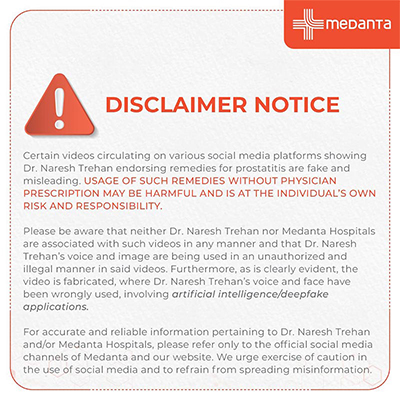Bleeding During Pregnancy

TABLE OF CONTENTS
Pregnant women often notice blood in their underwear, which can cause immediate concern. Spotting and bleeding are two different phenomena that require clear understanding.
Spotting refers to a few drops of blood that appear on underwear or toilet paper when wiping. The amount is minimal—just enough to notice but not enough to fill a panty liner. The blood may appear pink, red, or dark brown in colour.
Bleeding, however, is distinctly different. It involves a heavier flow of blood that requires wearing a pad or panty liner to prevent soaking through underwear. This distinction is essential when communicating with doctors.
For most women, spotting during pregnancy—especially in the first trimester—is usually not a cause for concern. Many cases of early pregnancy bleeding resolve without complications. However, all instances of bleeding should be reported to a doctor as a precautionary measure.
When tracking spotting or bleeding to report to a doctor, women should note:
Colour: Is the blood brown, pink, or bright red?
Consistency: Is it smooth, thick, watery, or containing clots or mucus?
Quantity: Just a few drops when wiping, or enough to require protection?
Timing: When did it start, and how long has it lasted?
Is Spotting During Pregnancy Normal?
Many expectant mothers experience some form of vaginal bleeding or spotting throughout their pregnancy. Indeed, this is remarkably common, affecting up to one out of four of all pregnant women. This statistic alone should provide some reassurance that spotting doesn't automatically signal a problem.
Spotting is particularly common during the first trimester, occurring in the initial 12 weeks. Most women who experience light bleeding during pregnancy go on to deliver perfectly healthy babies. This fact is worth remembering whenever anxiety surfaces about spotting.
For first-time mothers, understanding what constitutes "normal" can be challenging. Normal spotting:
It is light (just a few drops)
Usually stops on its own within hours or days
Isn't accompanied by severe pain, cramping, or dizziness
Doesn't resemble a regular menstrual period in flow or duration
The timing of spotting also affects its significance:
First trimester: Most common and typically less concerning
Second trimester: Less common but can be normal after activities like sex
Third trimester: Requires closer attention as pregnancy progresses
Despite its prevalence, all instances of vaginal bleeding deserve attention. Physicians recommend that pregnant women report any bleeding to their doctor. This doesn't mean rushing to emergency care for light spotting—merely that documentation and professional awareness are prudent steps.
7 Common Causes of Spotting in Pregnancy
Understanding the underlying reasons for spotting can help expectant mothers distinguish between harmless bleeding and warning signs. Several distinct causes exist for why bleeding may occur at different stages of pregnancy, each with unique characteristics.
Implantation Bleeding
When a fertilised egg gets attached to the uterine lining, some women experience light bleeding. This implantation bleeding typically occurs 6 to 10 days after conception, around the time a period would be expected. The blood appears pinkish or brownish rather than bright red and usually stops within 1-3 days. Many pregnant women experience this early pregnancy sign.
Hormonal Changes
Fluctuations in hormone levels, specifically progesterone drops, can trigger light bleeding. This commonly happens between 4-8 weeks of pregnancy. As your body adjusts to pregnancy, the developing placenta takes over hormone production around the 13th week, at which point this spotting normally disappears.
Cervical Irritation or Infection
The cervix receives increased blood supply during pregnancy, making it more sensitive and prone to bleeding. Consequently, infections such as chlamydia, gonorrhoea, or urinary tract infections can cause light bleeding. Furthermore, the cells inside the cervical canal spread to the surface (cervical erosion or ectropion), creating a redder appearance that bleeds more easily.
Sexual Intercourse
Sexual activity can cause spotting due to the cervix's increased sensitivity and blood flow during pregnancy. This light bleeding after intercourse is frequently harmless - typically appearing as pinkish, brown, or light red spotting that resolves quickly. Some women might notice this more frequently in later pregnancy as the cervix prepares for labour.
Subchorionic Haemorrhage
A subchorionic haemorrhage occurs when blood collects between the uterine wall and the chorion membrane. Most common between 10 to 20 weeks gestation, subchorionic hematomas often resolve naturally without treatment. Symptoms range from light spotting to heavy bleeding with clots.
Placenta-related Issues
Later in pregnancy, placental complications can cause bleeding. Placenta previa (when the placenta is over the woman's cervix) presents as bright red vaginal bleeding, usually without pain, after 20 weeks. Detachment of the female's placenta from the uterine wall (placental abruption) manifests as bleeding accompanied by abdominal pain, typically in the third trimester.
Miscarriage or Ectopic Pregnancy
Vaginal bleeding is the most common sign of early pregnancy loss. In miscarriage, bleeding typically progresses from light to heavy, often with cramping. An ectopic pregnancy (when a fertilised egg gets attached outside the uterus, usually in a fallopian tube) can cause light bleeding that may progress to heavy bleeding if the tube ruptures. Both conditions require immediate medical attention.
When to Be Concerned About Spotting
While some bleeding during pregnancy is common, certain signs and symptoms require immediate medical attention. Doctors emphasise that women should report any bleeding, regardless of how light or brief it may be. This allows your doctor to determine if further investigation is needed.
The timing of bleeding significantly affects its severity level. Bleeding in the second or third trimester typically raises more concern than first-trimester spotting. Even so, women should never ignore early bleeding as it might indicate serious complications.
You should contact your doctor immediately if the bleeding:
Is heavy enough to soak through a pad
Contains blood clots
Is accompanied by pain or cramping
Causes dizziness or fainting
Includes fever or chills
Additionally, bleeding resembling a menstrual period is not typical during pregnancy and warrants immediate medical evaluation. Your doctor might need to perform examinations, including vaginal or pelvic checks, ultrasound scans, or blood tests to determine the cause.
First-trimester bleeding could indicate serious complications such as miscarriage or molar pregnancy. Meanwhile, bleeding later in pregnancy might suggest preterm labour, placental problems like placenta previa, or, in rare cases, uterine rupture.
When communicating with doctors about bleeding, be prepared to answer questions about:
The heaviness of bleeding
Whether blood fills a panty liner
The colour of the blood
The presence of clots or tissue
Any accompanying pain or cramping
Remember that prompt reporting of symptoms allows for timely intervention that can potentially prevent complications.
When to Call Your Doctor
Immediate contact with your doctor or a visit to the emergency room is necessary if you experience:
Heavy bleeding (filling a pad every few hours)
Bleeding accompanied by pain or cramping
Dizziness alongside bleeding
Pain in your abdomen or pelvis
Fever or chills with bleeding
Signs of preterm labour, such as your water breaking
How to Manage Spotting During Pregnancy
After discussing spotting with a doctor, most women need practical guidance on how to manage this common occurrence at home. Rest is the cornerstone of managing bleeding during pregnancy, with most doctors recommending taking time off work and staying off your feet.
For women experiencing spotting or light bleeding, these basic management strategies can provide comfort and reduce risks:
Use pads instead of tampons while bleeding occurs. This helps prevent infection & allows you to monitor the amount of blood loss more accurately.
Avoid sexual intercourse during bleeding episodes. Sexual activity can resume once the bleeding has completely stopped.
Take mild pain relief medication (e.g. paracetamol) if needed for discomfort. Always check with your doctor before taking any medication during pregnancy.
Stay hydrated by drinking plenty of water. Proper hydration supports overall pregnancy health.
Report any changes in your condition to your doctor promptly.
Avoid douching at all times during pregnancy, as this can introduce bacteria and worsen bleeding.
Doctors prescribe progesterone in specific cases, especially for women who have had a previous miscarriage and are experiencing bleeding in early pregnancy (before 16 weeks).
Conclusion
Bleeding during pregnancy understandably causes worry for many expectant mothers. However, spotting affects approximately 25% of all pregnancies and often resolves without complications. First and foremost, understanding the difference between harmless spotting and concerning bleeding helps women make informed decisions about when to seek care. Although many cases of spotting stem from normal pregnancy processes like implantation or hormonal changes, all instances deserve medical attention as a precaution.
Tracking specific details about your bleeding—such as colour, consistency, and quantity—also provides valuable information for doctors. This documentation helps them distinguish between normal variations and potential complications. Certainly, some bleeding situations require immediate attention, particularly when accompanied by pain, heavy flow, or dizziness.
FAQs
Is bleeding during pregnancy always a cause for concern?
Not necessarily. Spotting occurs in up to 25% of all pregnancies and often doesn't indicate a problem. Many women who experience bleeding go on to have healthy pregnancies and babies. However, reporting any bleeding to your doctor for proper evaluation is essential.
What activities should I avoid if I'm experiencing bleeding during pregnancy?
If you're experiencing bleeding, avoid using tampons, douching, and sexual intercourse. These activities could potentially worsen bleeding or introduce infection during this sensitive time.
What is the typical treatment for bleeding during pregnancy?
In most cases, the main treatment for bleeding or spotting is rest. Your doctor might recommend taking time off work, staying off your feet, avoiding heavy lifting (over 10 pounds), and elevating your feet when possible.
When should I seek emergency care for bleeding during pregnancy?
While not all bleeding requires emergency care, you should immediately contact your doctor or go to the hospital if you experience heavy bleeding (soaking through pads), bleeding with pain or cramping, dizziness alongside bleeding, or pain in your abdomen or pelvis.






